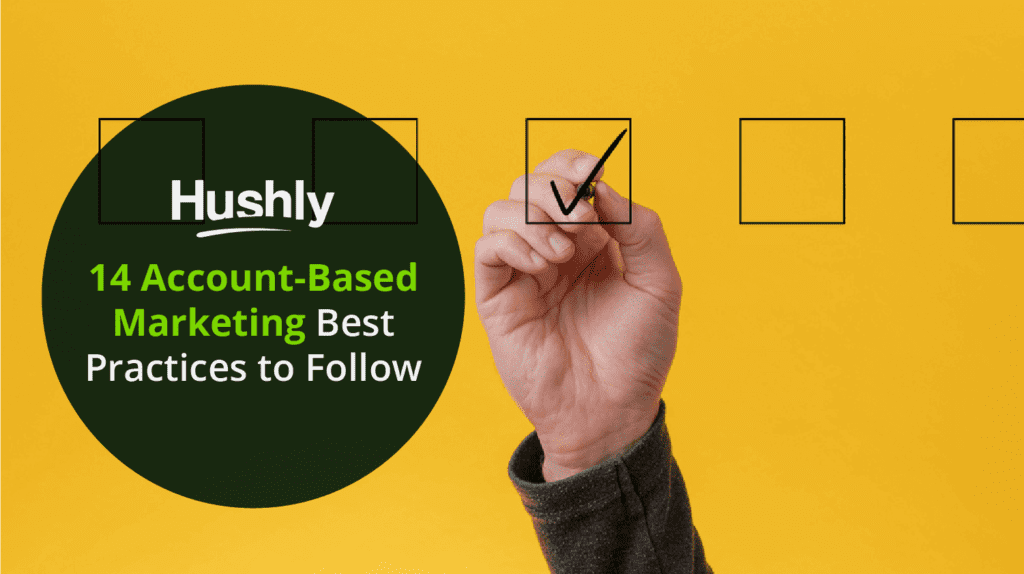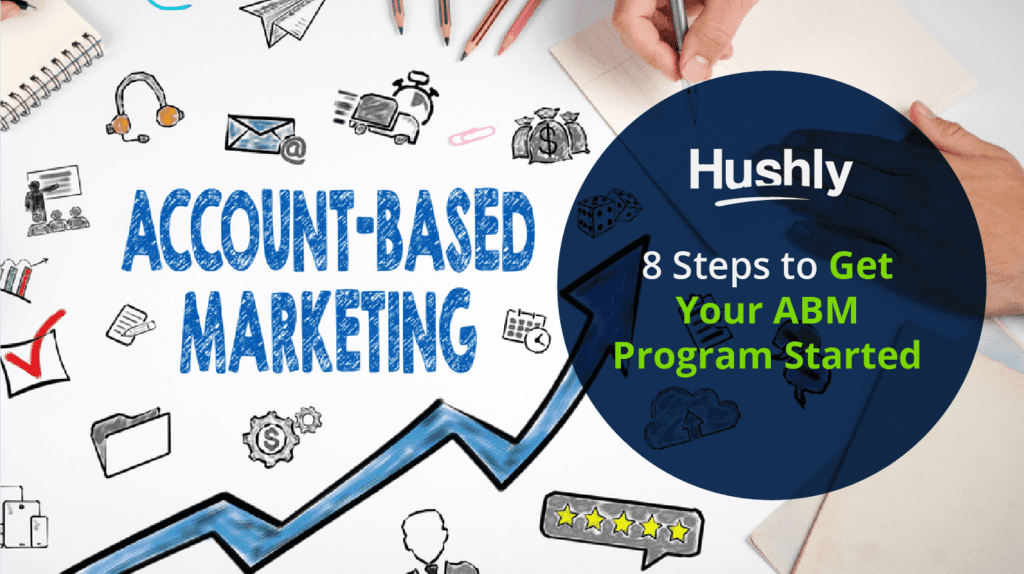Filters
Content Type
Topic
14 Account-Based Marketing Best Practices to Follow
Account-based marketing is part of a more fundamental shift toward consumer-focused marketing strategies.
Gone are the days when marketing could be mass-produced like a shotgun blast. Instead, today’s customers expect the precision of a sniper. They want personalized marketing, educational content, and genuine human relationships with their partners.
Account-based marketing is the strongest strategy to ensure this type of precision marketing.
If you’re working on perfecting your own ABM strategy for the years to come, you’ll need to know some of the industry’s best account-based marketing ideas so you can avoid common pitfalls.
Here are 14 account-based marketing best practices we suggest to ensure your efforts succeed.

1. Make Sure ABM is a Joint Effort Between Sales and Marketing
Every stakeholder in your organization should be on board with your strategy. To achieve this, it’s best not to develop a strategy without those stakeholders involved.
Give sales and marketing a fair chance to speak up about what they expect and need from the program before finalizing it. This will generate buy-in and keep enthusiasm for the project high.
2. Don’t Be Afraid to Start Small
If your business is new to ABM, it’s a great idea to start small and build up to a more full-scale ABM strategy.
We recommend picking a list of ideal candidates from every segment of business you plan to market to. If possible, try and find a few accounts of all sizes to work with.
These will be great opportunities for your sales and marketing teams to get comfortable with the new motions expected of them without too much pressure.
3. Create Excellent Buyer Personas
There are many great and unique ways to build an ABM program, but every single one of them will include buyer personas.
A buyer persona is a profile of the buyer at your target company that you hope to convert. It should include information like what their personal goals are, how they hope to benefit their company, the types of issues they face, and the concrete ways your company can help them.
4. Consider Account-Based Marketing Platforms Like Hushly
Since each of your ABM targets will expect a unique experience, you’ll need to be able to deliver that and continue to deliver it as you scale up.
Unfortunately, the more you commit to ABM, the more custom assets and content you’ll need.
Hushly’s advanced account-based marketing tools make it easy to manage your ABM campaigns because our system requires zero technical expertise.
An automated content platform like ours can cut the time and resources you spend on your ABM marketing dramatically.
5. Focus on Dynamic Personalization
A great way to impress your customers is to give them unique experiences. One fantastic example of this is dynamic content hubs and custom landing pages.
Dynamic elements of these assets should include details like company logos, slogans, and content.
With an adequate tech stack (like Hushly’s platform), creating these dynamic content hubs and other account-based marketing examples is as easy as dragging and dropping a few elements.
6. Try Gift Giving
Forming one-to-one relationships with employees of your target organization is a key aspect of a successful ABM program.
It’s on the nose, but gift-giving is a great way to ingratiate yourself with the prospect that you hope to get into your account-based marketing funnel.
Small gifts that speak directly to the person you’re trying to reach on a personal level can build trust and serve as an excellent icebreaker.
7. Form a Comprehensive Data Management Program
To adequately evaluate your ABM program, you’ll need a lot of high-quality data from every step of the process.
Assign someone in your organization who’s responsible for the management and analysis of data. This will be your source of truth and information.
Use them wisely: Only by properly interpreting the past can you plan for the future.
8. Constantly Reiterate, Update, and Optimize
Use that data to refine your process constantly. Don’t get so excited about a plan or aspect of your plan that you forget the larger picture.
Every piece of your ABM program should be on the chopping block at all times if performance isn’t where you need it to be.
9. Evaluate Your Technology Stack
Is your technology up to the task of managing your ABM campaigns? There’s a lot of incredible software online that will make your life easier when it comes to ABM.
You need hardware and software that are capable of quickly creating, editing, and managing ABM elements like custom landing and webpages.
In addition, the ability to quickly alter copy and marketing content for specific targets is a key task that your tech stack will need to be capable of.
10. Don’t Get Too Comfortable with Your Current Customers
With all the talk of targeting new customers and generating new demand and leads with ABM, it can be easy to forget that the whole point of ABM is to get more value out of the customers you do convert.
Stay focused on the accounts part of the account-based marketing playbook. Building up those long-term relationships is the biggest strength of ABM.
11. Use Technology and Data to Pick Targets
Don’t just rely on gut feelings or your hopes and dreams when selecting ABM targets. Your data management and analysis program should be capable of producing information that will guide your target picks.
Moby-Dick is out there, but don’t forget what happened to Ahab! Sometimes choosing a smaller target will be more efficient in the long run.
12. Aim for Comprehensive Customer Journeys
Your marketing content should be ready to guide customers to conversion regardless of where they’re at in the sales cycle.
Whether a customer needs just a small push or will spend months in the pipeline, your content needs to be ready to produce a seamless customer journey from discovery to checkout.
13. Create Omnichannel Content
Just like the content needs to be relevant to every stage of the sales cycle, it also needs to be capable of reaching your customers on any channel they prefer to engage in.
You’ll want to be able to engage through all account-based marketing channels: video, text, audio, and everything in between.
14. Know What Success Looks Like
Perhaps the most important part of designing your account-based marketing framework is to articulate what you hope to achieve with it.
Don’t forget that ABM is absolutely a team game.
Bring all stakeholders in on this part. Everyone involved in your ABM push should understand what the goals are, why they exist, and how you all plan to work together to achieve them.
Final Tip: Be Patient
Switching from traditional inbound/outbound marketing strategies to a comprehensive ABM strategy will not be easy, no matter how well you prepare. There will be unforeseen challenges along the way, and growing pains that no article or expert can prepare you for.
Don’t despair: The results will come if you stick to the fundamentals. There’s a reason that most marketers are switching to ABM techniques. It’s because ABM works and customers love it.
Give your team, and their results, time to develop. Keep in mind that ABM is naturally a slower marketing tactic as well. Your goal is to build long-term relationships and trust with your customers.
No matter how well you plan, success will require time to materialize.
Hushly is ready to assist you in implementing these best practices today. Learn how easy our platform makes it to manage your ABM strategy.
The post 14 Account-Based Marketing Best Practices to Follow appeared first on Hushly.



